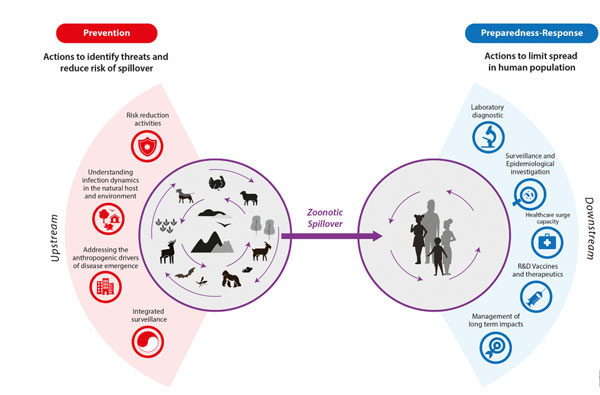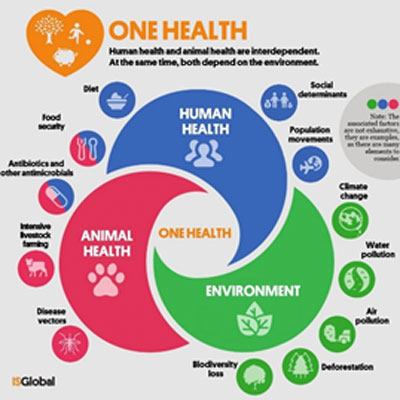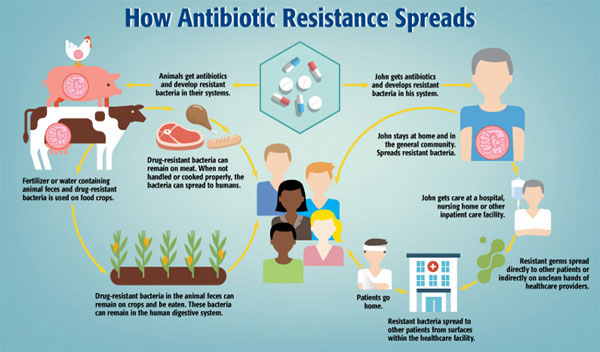 Safeguarding Human Health (Public Health):
Safeguarding Human Health (Public Health):
Unheard functions of Veterinarians.
By Dr. Mohamed Ijas (B.V.Sc, MBA, M.Sc), President/Sri Lanka Veterinary Association
Animal care impacts human health in many ways. Animals and Humans have evolved together and are dependent upon each other in numerous ways. Whether you come from a rural or urban background, the likelihoods are incomparable that you interact with animals regularly. In the end, animals provide us significantly more than just love and companionship. They also provide food, fibre, travel, sport and recreation, and scientific discovery for advancing medical research.

All living beings are interdependent.
The veterinary profession has advanced over the years, making advances in education, training, and medicine as well as the role veterinarians play in society. The study of animal health goes back to ancient times. The earliest records of veterinarian medical efforts come from China and Egypt about 3500 B.C. Records and cave writings indicate that human efforts to maintain the health of domestic animals using herbs.
A Short Historical View of Interconnection between Medical and Veterinary Sciences
The idea that animal health and the environment influence human health has been around since earliest times. As stated by German physician known as the “father of pathology” Rudolph Virchow (1821–1902), “between animal and human medicine there is no dividing line –nor should there be.”
Honestly the original mission of veterinary medicine was to advantage human health by increasing the food supply. In the 18th century, Pope Clement XI charged a physician, Dr. Giovanni Maria Lancisi, to plan disease control measures to tackle rinderpest, a highly destructive viral disease of cattle that was affecting the human food supply. Dr. Lancisi suggested that ill and suspected animals to be destroyed. In order to put Dr. Lancisi’s theories into effect, the first veterinary medical school in the world was established in Lyon, France.
In the late 19th and early 20th centuries, Drs. Rudolf Virchow and William Osler accepted the notion that human health and animal health were intricately connected. Virchow and Osler continued these cross-disciplinary efforts. Dr. Virchow early in his academic medical career, conducted animal experiments to study the life cycle of Trichinella spiralis a round worm (infected to humans by consuming undercooked pork) in pigs and cysticercosis (a tapeworm parasitic infection) and tuberculosis in cattle; he established the term “zoonosis.” His attempts facilitated the regular meat inspections by veterinarians in Europe and eventually elsewhere in the world.
However, as the 20th century continued, collaboration between medicine and veterinary medicine faded. Subsequently, in the 21st century, the upsurge of fatal zoonotic diseases, such as human immunodeficiency virus (HIV), severe acute respiratory syndrome (SARS-1 and SARS-2/Covid-19), Middle East respiratory syndrome (MERS), West Nile virus, COVID-19 and Avian Flu, Salmonellosis and the Ebola virus taught us the pressing requirement that these professions renew and increase collaborative efforts.
It can be baffling, initially, to consider veterinarians as involved in human health activities . But once you explore the numerous ways that caring for animals can affect human wellness, it becomes difficult to overlook. It can be useful to think about the various elements that contribute to our wellness as a population. Everything from the food we eat to the safety of our environments and even our social interactions can all play a role. But before we explore into those details, it’s important to gain a better understanding of veterinary public health.
Veterinary Public Health
“Veterinary public health is all the veterinary applications that impact the social, mental, and physical well-being of humans,”. The spectacle of veterinary public health begins in prehistoric Egypt when healer pastors did not distinguish caring of human patients and animals. Healer priest secured much knowledge from the anatomy (study of human/anima body) and diseases of animals that they employed to the healing of humans. This “one medicine” effort prevailed until the 19th century. Since then, the gap between human and animal physicians has been rising, mainly because of changes in political and cultural rules rather than scientific reasoning. Although public and political interest in veterinary public health declined in Europe and elsewhere in the world towards the end of the 20th century, it continued an important part of veterinary education and is now a recognised specialty in the developed and developing countries.
The World Health Organization defines veterinary public health as, “The sum of all contributions to the complete physical, mental and social well-being of humans through an understanding and application of veterinary medical science.” As per this definition, it is evident that every veterinary surgeon more or less contributes to public health. Such involvement may be through provision of health care for pets, protection of animal welfare (both ensure mental health of the people or animal therapy), biomedical research (help in vaccine development), or ensuring sufficient food animal production to ensure human nutrition and food safety. Veterinary public health effects on human health by reducing exposure to hazards arising from animals, animal products, and their environment. Examples of these hazards include zoonoses, vector borne infections and other transmissible diseases, chemicals and drugs used in animals, envenomation, and injuries from exposure to animals.
Veterinary Public Health (VPH) is an important part of public health activities using veterinary skills, knowledge and resources to the protection and the improvement of human health and human welfare. The discipline of Veterinary Public Health includes a wide variety of inter-professional areas coupling the health triad man-animal - environment and all its connections. As examples of areas related to this triad can be mentioned for man: health status, wealth status, lifestyle, but also nutrition, zoonosis control, chemical residues, animal protection and animal husbandry. For animals to deal with domestic (production: milk, meat, poultry meat, and eggs), and pet-animals, sylvatic, and synanthropic animals, vector (pest) control, nature conservation/management. Both man and animals play an important role in the environment with its vegetation, water (drinking, surface, swimming water, and sewage), soil, air, noise, radiation, and other physical and chemical factors. Summing up these areas which are integrated in Veterinary Public Health education is to emphasize that veterinarians can act as equal discussion partners with other health care professions and as senior activators in control programmes or outbreak investigations of communicable/zoonotic diseases.
Emerging Zoonotic Diseases and One Health Approach
In the 1960s, Dr. Calvin W. Schwabe, the late veterinary epidemiologist and parasitologist at the University of California, Davis, coined the term “One Medicine,” which promoted a unified medical and veterinary medical approach against zoonotic diseases. This strategy is important because there have been recent emerging zoonotic disease outbreaks, including the Nipah virus, severe acute respiratory syndrome (SARS-1, 2/Covi-19), and avian influenza H5N1/Bird Flu, that devastated Asia, Africa, and Europe. Reasons for the emergence of these zoonotic diseases include intensive agricultural practices, global trade in exotic animals, consumption of “bush meat,” and human population demands. We need to assume that many more zoonotic disease outbreaks “emerging” in the future. Under this backdrop it is apparent that we need holistic approaches to avert pandemics that we experienced in the recent past.

Recently emerging and re-emerging infections are documented as a global threat. And 75% of these diseases are possibly zoonotic. The public and health professionals notice that the emergence of a new “deadly” disease in any area of the world is a threat for all humans. Recent examples that support this belief include the outbreaks of Covid-19 pandemic, avian influenza, bovine spongiform encephalopathy (mad cow disease) in the United Kingdom, West Nile virus and monkeypox in North America.
At present, “Food Safety Controls” are now being replaced by “Risk-Based Controls” in all stages of food production. Veterinarians are major stakeholders in undertaking “Risk-Based Controls” in Food Safety in developed countries. They are ideally placed in society to undertake the role of “Risk Based Controls.”

To encounter the threats of emerging zoonotic diseases and pandemics, we should learn from our predecessors in the 18th and 19th centuries. Far-sighted leaders and educators of medicine embraced the fact that zoonotic pathogens infect both humans and animals and, as a result, they encouraged their physician colleagues to work closely with their veterinary medical colleagues. Thus “One Health” concept, which promotes the partnership between human and veterinary medicine. The notion of “One Health’’ provides important steps toward our understanding of how to control, and ultimately, prevent zoonotic disease transmission, which would improve the health and lives of both animals and humans.

Importance of One Health Approach in Covid-19 response
Veterinarians have been essential in the global response to tackling Covid-19. Veterinarians have not only provided critical resources by diverting equipment and medicines to human health. They have also joined healthcare professionals in carrying out swab tests on people and helping public health teams in tracking the disease in humans. The outbreak has therefore triggered close consultation and information sharing between animal health and human health specialists.
One Health, an inclusive solution to antimicrobial resistance
It is well known that most of the antimicrobial agents used in veterinary medicine and human health care belong to the same families and share similar mechanisms of action. This increases the risk of resistant bacteria moving between humans and animals through the food chain or other routes of transmission (faeces, direct contact, etc.). Transferable resistance mechanisms have been detected in bacteria of human and animal origin found in many different countries.

One of the practices that has driven the increase and spread of antimicrobial resistance since the mid-20th century is the widespread use of antibiotics as “growth promoters” to stimulate weight gain in farm animals. Antibiotics have also been used in animals to prevent disease. This has led to the selection of resistant bacteria in animals, which reach humans via the food chain.
So, it is apparent that antibacterial usage in Veterinary practice has elusive effect on human healthcare services thus prudent use of antibacterials in veterinary medicine has a direct effect on public health. Thus, the Veterinarians contribution to avert antibacterials resistance plays and important role in improving the health of people, animals, and our environment.
The re-emergence of zoonoses, together with other issues like pollution incidents, antimicrobial resistance, and the socioeconomic importance of food production, make a mutual inter-professional attitude to veterinary public health is more pressing. Versatile teams comprising all those who contribute to the treatment (Physicians), control (Public health professionals), and prevention of diseases of animal origin (Veterinarians) are essential, not only to determine the source of disease but also future controls.
A key viewpoint that to consider as “Veterinarians are essential Health Workers” is improvement in Veterinary Public Health services in which of zoonosis control is very crucial component. With the increased urbanization, where more people and animals live together in vast growing cities have created more demand for Veterinary public health services. In poorer areas this may be more related to control programmes of zoonoses, contacted through from free-ranging livestock, and in wealthy parts of the world this may be more related to pollution of public parks and playing grounds. In the latter areas an increasing number of allergy-based diseased individuals are said to be reported, which also may be related to pet animals, synanthropic (undomesticated animals such as rats, mouse, pigeons, civet etc) animals and pests/vectors like dust, mites, ticks, fleas, etc. So, Municipal health services in any urbanized area must hire their own veterinarian.
Veterinary medicine is about the only discipline that can advise over: environmental pollution/protection, surface water/swimming water quality, stray animals, sylvatic animals, pet animal policies in cities, allergies, schools, and animals, zoonoses control, food hygiene (both microbial and non-microbial contaminations), education in the field, social aspects of having companion or sport animals. Considering involvements of Veterinarians in above stated public health activities, it is apparent that veterinarians are essential to protect human health.
Leave Comments